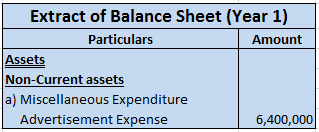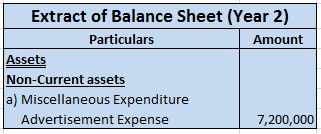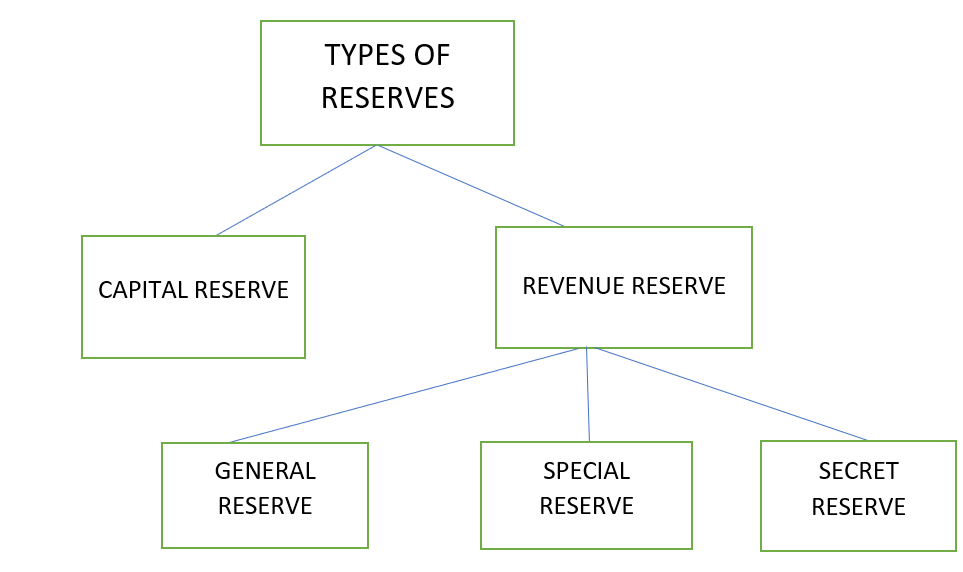Fictitious assets can be defined as those fake assets which save revenue for the company. These do not exist physically but also do not qualify as intangible assets. These are merely the expenses or losses that are not fully written off in the accounting period in which they are incurred. These expeRead more
Fictitious assets can be defined as those fake assets which save revenue for the company. These do not exist physically but also do not qualify as intangible assets. These are merely the expenses or losses that are not fully written off in the accounting period in which they are incurred. These expenses are amortized over a period of time.
These assets do not have any realizable value except for the cash outflow. These are created to delay the recognition of the expense and defer it to future periods.
Fictitious assets actually qualify as an expense but are treated as assets only for the fact that they are expected to give returns over a course of more than one year. Examples are Advertisement expenses, preliminary expense, etc.
Treatment
Fictitious assets are shown on the assets side of the balance sheet under the head miscellaneous expenditure. A part of these expenses are shown in the profit and loss statement and the remaining amount is carried forward to the following years.
For example, a company Timber Ltd. incurs expenses relating to advertisement of its products worth 8,000,000 and this advertisement campaign can earn revenue for the company for around 10 years. Hence, such expense of 8,000,000 would be amortized over a period of 10 years.
For the first year, an amount of 800,000 (8,000,000/10) would appear in the profit and loss statement as expense and the rest 7,200,000 would appear as advertisement expense under the Miscellaneous expenditure on the assets side of the balance sheet.


For the second year, an amount of 800,000 (8,000,000/10) would appear in the profit and loss statement as expense and the rest 6,400,000 would appear as advertisement expense under the Miscellaneous expenditure on the assets side of the balance sheet. And so on.


We can say that fictitious assets are deferred revenue expenditures as well as intangible assets. But goodwill, etc are not fictitious assets. Hence, all fictitious assets are intangible assets but all intangible assets are not fictitious assets.
Common fictitious assets that could generally be seen are:
- Advertisement expenses
- Preliminary expenses
- Discount allowed on the issue of shares
- Loss incurred on issue of debentures
- Underwriting Commission












Trading A/c is a Nominal A/c which follows the rule “Debit the expenses and losses, Credit the incomes and gains” So, the Credit side of Trading A/c shows income from the sale of goods. It includes Sales, Closing stock (if adjustment for it has not been made yet) and Gross Loss (if any). TRADRead more
Trading A/c is a Nominal A/c which follows the rule “Debit the expenses and losses, Credit the incomes and gains”
So, the Credit side of Trading A/c shows income from the sale of goods. It includes Sales, Closing stock (if adjustment for it has not been made yet) and Gross Loss (if any).
TRADING ACCOUNT
Trading A/c is prepared for calculating the Gross Profit or Gross Loss arising from the trading activities of a business.
Trading activities are mostly related to buying and selling of goods. However, in between buying and selling, a lot of activities are involved like transportation, warehousing, etc. So, all the expenses that are directly related to manufacturing or purchase of goods are also recorded in the Trading A/c.
CREDIT SIDE OF TRADING ACCOUNT
It includes,
SALES – When goods are sold to earn a profit, it is called sales. It can be cash sales or credit sales.
Suppose you are in the business of manufacturing and trading shirts. You sold shirts worth $ 20,000 during the year. This $20,000 is your sales.
SALES RETURN – When the goods sold by you are returned by the customer, it is known as sales return. Sales return is deducted from the sales.
Continuing with the above example, the customers returned shirts of $1,000 because they didn’t like them. This return is known as sales return or return inward (as goods are coming back i.e. in)
CLOSING STOCK – Stock is nothing but goods that are either obtained for resale or manufactured for sale and are yet unsold on any particular date.
The value of stock at the beginning of an accounting year is called Opening stock while the value of the stock at the end of an accounting year is called Closing stock.
Closing stock is valued at cost price or market price whichever is less.
It includes,
For example – On 31st March 2023, there was unused raw material worth $1,000 and shirts worth $5,000 remained unsold.
So, we have Closing Stock of Raw material – $1,000
Closing Stock of Finished Goods – $5,000
Normally, the closing stock is given outside the Trial Balance because its valuation is made after accounts have been closed. It is incorporated in the books by transferring it to the Trading A/c. So, it is shown on the credit side of Trading A/c as well as on the assets side of the Balance sheet.
However, if the closing stock is given inside the Trail Balance, it means that the closing stock must have already been deducted from the Purchases account. So, closing stock will only be shown on the assets side of the Balance sheet.
GROSS LOSS – If purchases and direct expenses exceed sales, then it is a Gross loss. In other words, when Debit side > credit side.
DEBIT SIDE OF TRADING ACCOUNT
It includes
OPENING STOCK – The value of the stock at the beginning of an accounting year is called Opening stock.
The closing stock of the last year becomes the opening stock of the current year.
PURCHASES – Goods that have been bought for resale or raw materials purchased for the manufacturing of the product are terms as Purchases. These goods must be related to the business you are doing. It includes cash as well as credit Purchases.
PURCHASES RETURN – When goods bought are returned to the suppliers due to any reason. This is known as Purchase return. Purchase return is deducted from the Purchases.
WAGES – Wages are paid to the workers who are directly engaged in the loading, unloading and production of goods.
CARRIAGE or CARRIAGE INWARDS or FREIGHT – It refers to the cost of transporting goods from the supplier.
MANUFACTURING EXPENSES – All expenses incurred in the manufacture of goods such as Coal, Gas, Fuel, Water, Power, Factory rent, Factory lighting etc.
DOCK CHARGES – These are charged by port authorities when unloading goods at a dock or wharf. Such charges paid in connection with goods purchased are considered direct expenses and are debited to Trading a/c.
IMPORT DUTY or CUSTOM DUTY – It is a tax collected on imports and specific exports by a country’s customs authorities.
If import duty is paid on the import of goods, then they are shown on the Dr. side of the Trading A/c.
ROYALTY – Royalty refers to the amount paid for the use of assets belonging to another person. It includes royalty for the use of intangible assets, such as copyrights, trademarks, or franchisee agreements. It is also paid for the use of natural resources, such as mining leases.
Royalty is charged to the Trading A/c as it increases the cost of production.
GROSS PROFIT – When sales exceed the amount of purchases and the expenses directly connected with such purchases i.e. when Credit side> Debit side.
See less